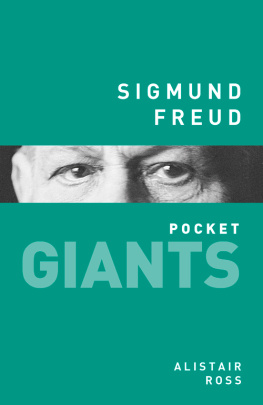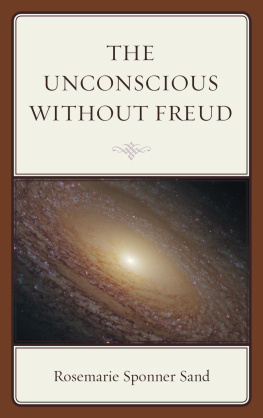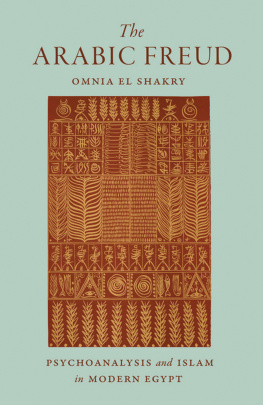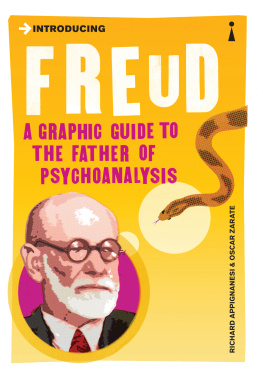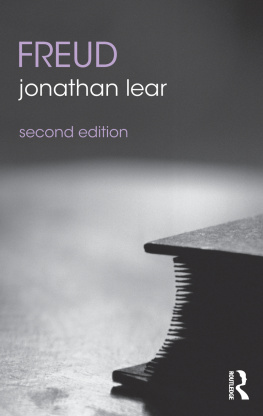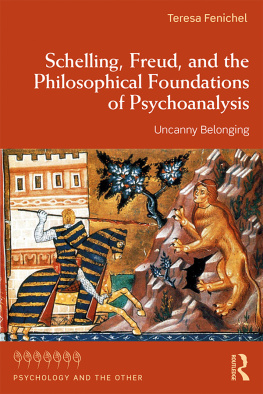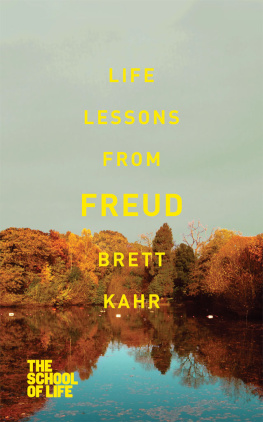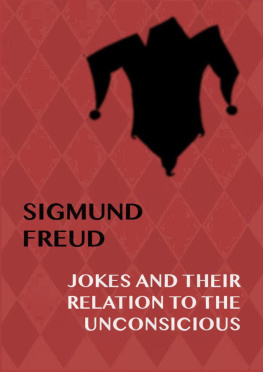Freud The Key Ideas
With thanks to Richard Chapman, the illustrator of this book.
Teach
Yourself
Freud The Key Ideas
Ruth Snowden
For UK order enquiries: please contact
Bookpoint Ltd, 130 Milton Park, Abingdon, Oxon OX14 4SB.
Telephone: +44 (0) 1235 827720. Fax: +44 (0) 1235 400454.
Lines are open 09.0017.00, Monday to Saturday, with a 24-hour message answering service. Details about our titles and how to order are available at www.teachyourself.com
For USA order enquiries: please contact McGraw-Hill Customer Services, PO Box 545, Blacklick, OH 43004-0545, USA.
Telephone: 1-800-722-4726. Fax: 1-614-755-5645.
For Canada order enquiries: please contact McGraw-Hill Ryerson Ltd, 300 Water St, Whitby, Ontario L1N 9B6, Canada.
Telephone: 905 430 5000. Fax: 905 430 5020.
Long renowned as the authoritative source for self-guided learning with more than 50 million copies sold worldwide the Teach Yourself series includes over 500 titles in the fields of languages, crafts, hobbies, business, computing and education.
British Library Cataloguing in Publication Data:
a catalogue record for this title is available from the British Library.
Library of Congress Catalog Card Number: on file.
First published in UK 2006 by Hodder Education, part of Hachette UK, 338 Euston Road, London NW1 3BH.
First published in US 2006 by The McGraw-Hill Companies, Inc.
This edition published 2010.
Previously published as Teach Yourself Freud.
The Teach Yourself name is a registered trade mark of Hodder Headline.
Copyright 2006, 2010 Ruth Snowden
In UK: All rights reserved. Apart from any permitted use under UK copyright law, no part of this publication may be reproduced or transmitted in any form or by any means, electronic or mechanical, including photocopy, recording, or any information, storage and retrieval system, without permission in writing from the publisher or under licence from the Copyright Licensing Agency Limited. Further details of such licences (for reprographic reproduction) may be obtained from the Copyright Licensing Agency Limited, of Saffron House, 610 Kirby Street, London EC1N 8TS.
In US: All rights reserved. Except as permitted under the United States Copyright Act of 1976, no part of this publication may be reproduced or distributed in any form or by any means, or stored in a database or retrieval system, without the prior written permission of the publisher.
Typeset by MPS Limited, A Macmillan Company.
Printed in Great Britain for Hodder Education, an Hachette UK Company, 338 Euston Road, London NW1 3BH, by CPI Cox & Wyman, Reading, Berkshire RG1 8EX.
The publisher has used its best endeavours to ensure that the URLs for external websites referred to in this book are correct and active at the time of going to press. However, the publisher and the author have no responsibility for the websites and can make no guarantee that a site will remain live or that the content will remain relevant, decent or appropriate.
Hachette UKs policy is to use papers that are natural, renewable and recyclable products and made from wood grown in sustainable forests. The logging and manufacturing processes are expected to conform to the environmental regulations of the country of origin.
Impression number | 10 9 8 7 6 5 4 3 2 1 |
Year | 2014 2013 2012 2011 2010 |
Contents
Meet the author
Welcome to FreudThe Key Ideas!
I first became interested in both Freud and his follower Jung (who eventually broke away from Freud) while I was still at school. What really drew me to their work was their shared interest in dreams and the unconscious, and it was this aspect that led me to a decision to study psychology at degree level. As it turned out however, my BSc degree in Psychology at the University of Birmingham was very firmly based on the scientific method and behavioural psychology, and so I was disappointed to find that Freud and Jungs work was not considered worthy of much study. After university I went into teaching for a few years. This proved to be very useful groundwork in preparing me to be a writer, because I had to learn how to explain ideas in ways which most people could grasp easily. My early interest in dreams was somewhat on the back burner at this stage, but I was always interested to listen to childrens accounts of their nocturnal journeys.
A necessary career break came while my own three children were small, but it was during this period that I turned once again to my own inner world and began to record my dreams in a dream diary. I also became fascinated by my childrens accounts of their own dreams and the way their very individual psyches gradually unfolded. This was the beginning of something big, although I was yet to realize it at the time. Eventually my early interests really came to the fore again and I set up a complementary therapy practice, which offered personal development amongst other things. One of the main approaches I used for this was dream-work and in 1998 I was commissioned to write my first book, Working With Dreams. This was published by How To Books, under the name of Ruth Berry. Two years later, in 2000, Hodder published two more books of mine: Freud: a Beginners Guide and Jung: a Beginners Guide. By the time these were followed by the first editions of Teach Yourself Freud and Teach Yourself Jung I had remarried and now write as Ruth Snowden.
I now work full-time as a writer and my main interests lie in the spiritual and the psychological, especially in the interactions between the natural world, human culture and the psyche. Freud and Jung were both deeply fascinated by the same kinds of things and you can read accounts in their work of their studies of ancient history, myth, dreams, synchronicities, the paranormal and world religions. As well as writing for adults, I also write poetry and childrens fiction, where I enjoy weaving myths into new stories.
Nowadays, a century after his time, people often make fun of some of Freuds more way-out ideas. But I feel that this is unfair. It is easy to forget that Freud was one of the greatest thinkers of his day and his ground-breaking work has totally changed our way of looking at ourselves and our relationships with others.
Ruth Snowden, 2010
1: Only got a minute?
- Sigmund Freud was a doctor who lived in Vienna. He is famous because he founded a new system of psychology that he called psychoanalysis.
- Freud began by using hypnosis to treat neurotic patients. He decided that neurotic symptoms were caused by repressed sexual experiences.
- He explored these suppressed memories using dream analysis and his new technique, which he called free association.
- Dreams are of central importance in psychoanalysis. Freud saw dreams as disguised wish fulfilments, mainly harking back to childhood experiences.
- Much of Freuds work concerned the unconscious mind, which he explored by looking at parapraxes (Freudian slips) and jokes, as well as dreams.
- Freud claimed that the sexual instinct was very complex and that it was present from birth. Sexual development could get stuck at any stage.
- His theories about the stages of childhood sexual development became a model for social and psychological development generally.
- Freud said that the mind had three different levels: the



